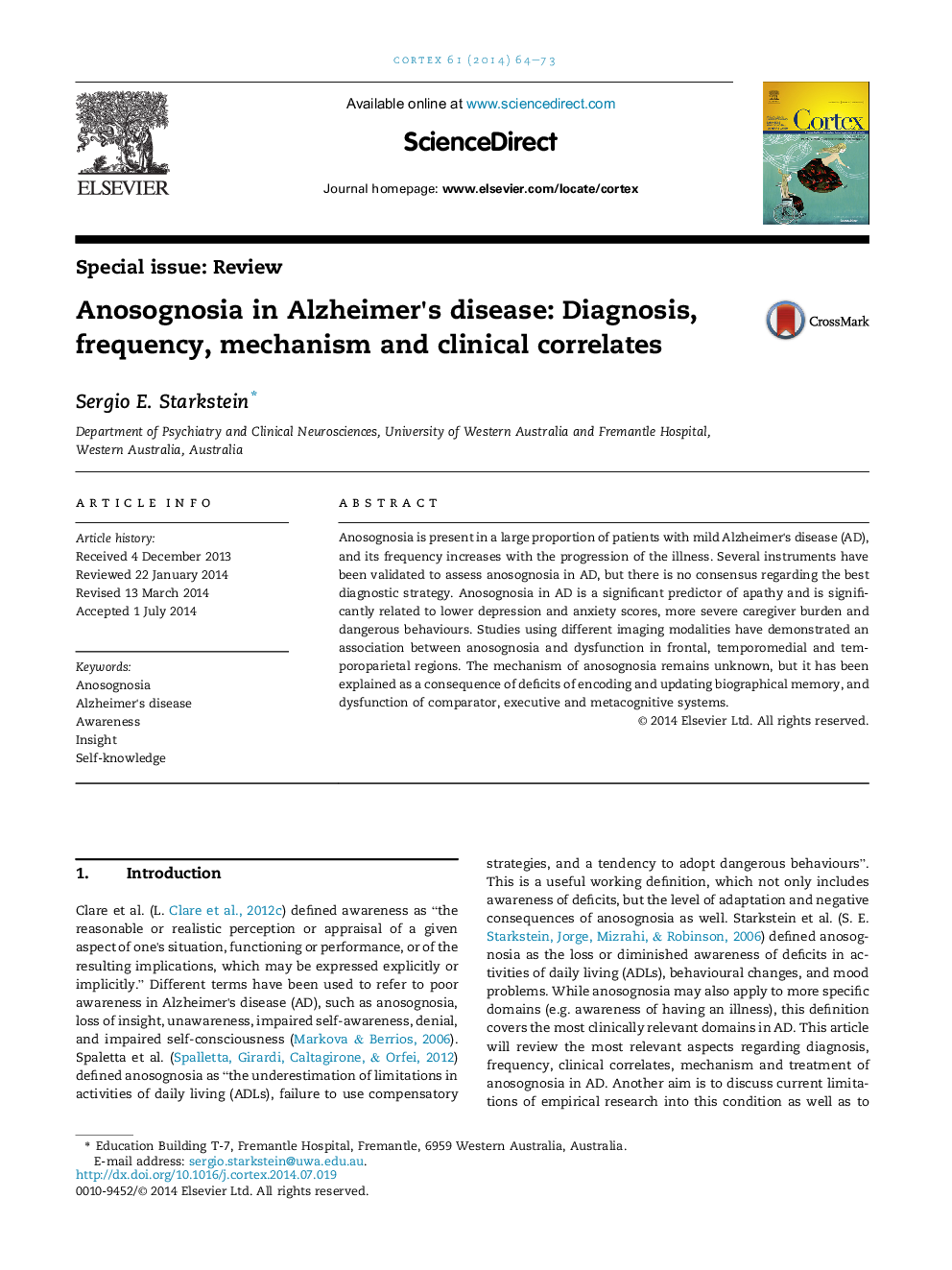| Article ID | Journal | Published Year | Pages | File Type |
|---|---|---|---|---|
| 7315041 | Cortex | 2014 | 10 Pages |
Abstract
Anosognosia is present in a large proportion of patients with mild Alzheimer's disease (AD), and its frequency increases with the progression of the illness. Several instruments have been validated to assess anosognosia in AD, but there is no consensus regarding the best diagnostic strategy. Anosognosia in AD is a significant predictor of apathy and is significantly related to lower depression and anxiety scores, more severe caregiver burden and dangerous behaviours. Studies using different imaging modalities have demonstrated an association between anosognosia and dysfunction in frontal, temporomedial and temporoparietal regions. The mechanism of anosognosia remains unknown, but it has been explained as a consequence of deficits of encoding and updating biographical memory, and dysfunction of comparator, executive and metacognitive systems.
Related Topics
Life Sciences
Neuroscience
Behavioral Neuroscience
Authors
Sergio E. Starkstein,
